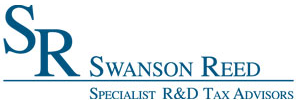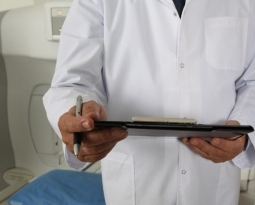Documentation: Essential to the R&D Tax Credit
Documentation is the key component of claiming the Research and Development Tax Credit. Here at Swanson Reed, we see a large amount of companies not taking advantage of the R&D credit because they are unclear on the documentation and substantiation requirements. Here is what needs to be documented.
Qualified Research Expenditures (QRE’s) :
Wages: Any payment to a staff member for qualified R&D work that they conducted.
Eligible documentation for payroll includes W2’s, payroll register, interviews, work schedules, morning minutes or other tracking documents that associate the labor costs to the R&D project.
A payroll register is likely the best reference. If an entire year was spent on the R&D project, an employee’s W2 will be easier to extract. If a worker’s time was split with other activities, devise and write down a means of allocating time to the R&D work. Written, summarized and signed results of interviews with employees partially involved in R&D are a reliable backup.
Payroll is typically the largest component of an R&D claim, so this is not the place to get slack on documentation.
*Note that only direct labor and first-line supervisors are eligible.
Supplies: The purchase of any necessary supplies being used in the qualified research activities.
A general ledger is likely the best reference. Each general ledger entry should be supportable by an invoice. Sorting the general ledger entries or loose invoices by vendors that typically support the R&D project will typically surface the R&D costs more quickly. If the R&D project has its own cost center, sorting the general ledger by cost centers will yield results quickly as well.
Contracted Research Services : The payments made to a third party for conducting qualified research activities.
Invoices and 1099’s are good sources of documentation for contracted research services.
If invoices are filed by vendors, identify the ones that typically support the R&D projects.
1099’s summarize all payments to a vendor during a year. If a vendor worked on other jobs beyond the R&D project, a written-down means of allocating the costs to the R&D projects is needed.
Qualified Research Activities:
Taxpayers must have hard evidence of how and why the qualified research activities meet the criteria of the IRS’ Four-Part Test:
- Permitted Purpose: The purpose of the activity or project must be to create new (or improve existing) functionality, performance, reliability, or quality of a business component.
- Elimination of Uncertainty: The taxpayer must intend to discover information that would eliminate uncertainty concerning the development or improvement of the business component. Uncertainty exists if the information available to the taxpayer does not establish the capability of development or improvement, method of development, or the appropriateness of the business component’s design.
- Process of Experimentation: The taxpayer must undergo a systematic process designed to evaluate one or more alternatives to achieve a result where the capability or method of achieving that result is uncertain at the beginning of the taxpayer’s research activities.
- Technological in Nature: The process of experimentation used to discover information must fundamentally rely on principles of hard science such as physical or biological sciences, chemistry, engineering or computer science.
The Consistency Rule:
According to the Internal Revenue Code, in order to accurately calculate the credit, the taxpayer is required to define QRE’s the same from year to year. If a taxpayer changes their definition of QRE’s for the current year, he or she must change the definition for prior years that will affect the result of one of the three calculation methods. Documentation of this must be provided.
Audit Documentation:
In the case of an audit, every company needs to be able to present documentation that illustrates the progression of its R&D activity and can ultimately prove its R&D eligibility. Along with the above sources of documentations, here are some other records that would be beneficial to keep:
- Project records/ lab notes
- Conceptual sketches
- Design drawings
- Photographs/videos of various stages of build/ assembly/ testing
- Prototypes
- Testing protocols
- Patent application number
Essentials of Data Collection: CORRECT AND COMPLETE!
Information and data must be supportable, above reproach, and related to the R&D performed. Pretend that an IRS auditor is looking over your shoulder while compiling the information.
The size of the credit is directly proportional to the amount of substantiated expenses that are claimed.
Swanson Reed understands the importance of data collection, but knows it can be a time-consuming process. We are here to help you each step of the way. Click here to check out our substantiation checklist or contact one of our Swanson Reed specialists.

















